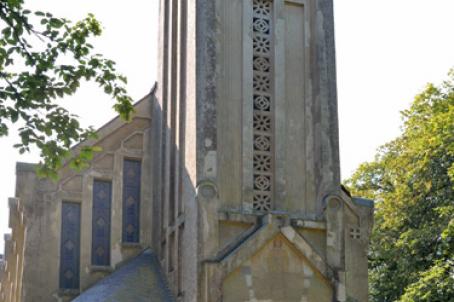Church of the Sacré-Cœur
A must-see place in Bagnoles-de-l'Orne, its high perched bell tower overhanging its stone staircase offers a breathtaking view of the town. Its facade, its bell tower and its huge stained glass windows with a strong symbolic, very marked on the aquatic theme: waterfalls, waves, etc... make the fame of this place.
About this building
The church of the Sacred Heart was built in 1934 by the architect Olivier Michelin thanks to the subscriptions of people taking the waters. It replaced the old chapel known as the "Hundred Steps" dating from 1897. This Art Deco church, of a dazzling whiteness, is built in reinforced concrete. The facade has a neo-Moorish style porch, decorated with volutes and topped by a bell tower with columns. The stained-glass windows created around the theme of water are signed by the master glass-maker Charles Lorin de Chartres. The architectural and decorative qualities of the Church of the Sacred Heart were recognised in 2004 by the Ministry of Culture, which awarded it the "20th Century Heritage" label.






